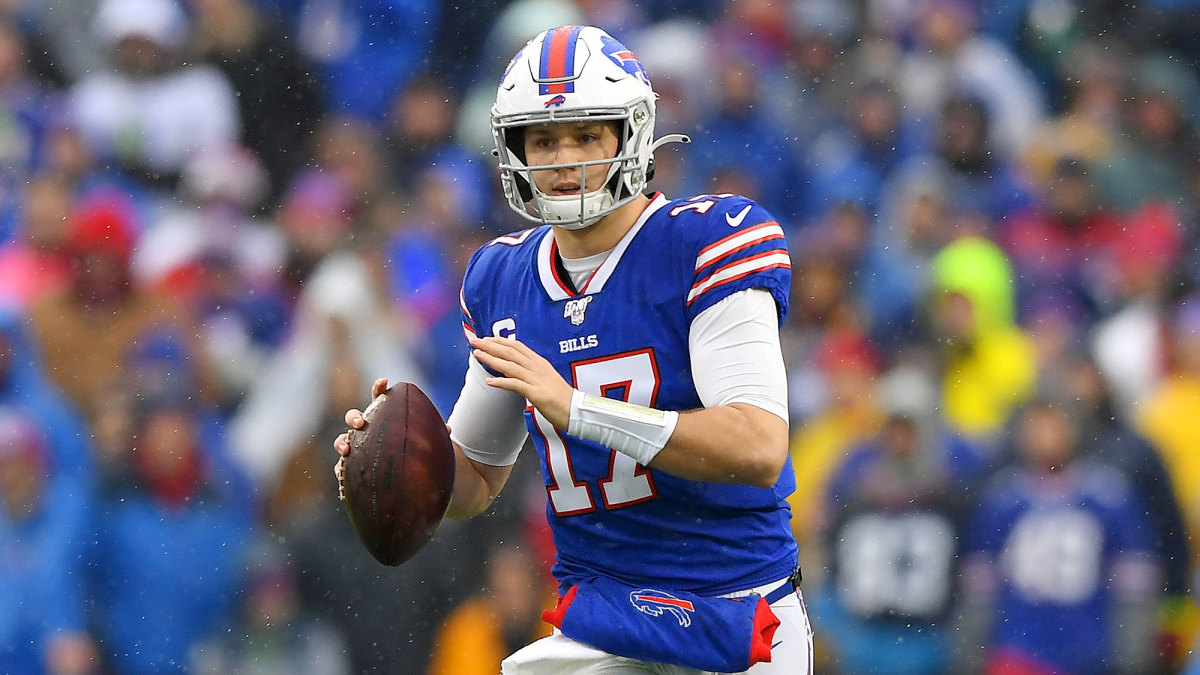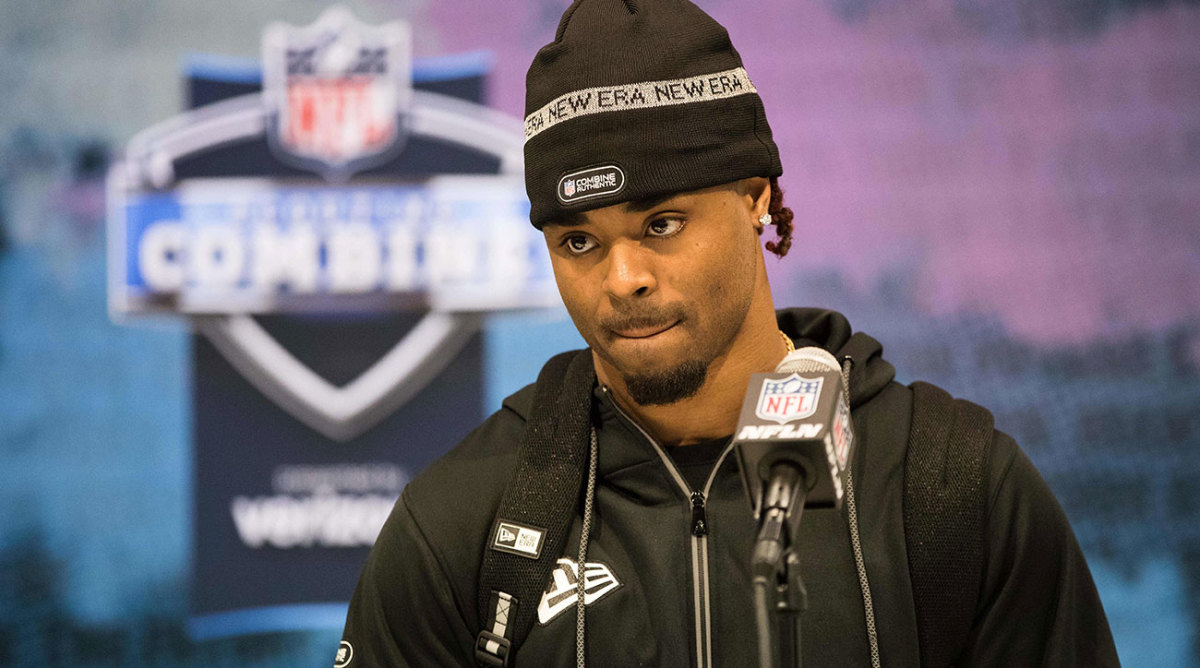Every AFC Team's Biggest Weakness Going Into 2020
When a team like the Chiefs storms its way to the Super Bowl, or a team like the Ravens pummels its opponents throughout the regular season, it’s going to change the way opponents stack their own rosters. Along with the Saints in the NFC, both of these AFC contenders have among the most uniquely challenging rosters to defend in recent memory. This makes analysis of their opponents’ strengths more interesting—and their weaknesses too. Teams with depleted secondaries and linebacking corps are at greater risk than ever. Teams without the ability to cover tight ends are at a bigger disadvantage than ever. Teams that cannot, essentially, be everything all at once are doomed to flounder. With that in mind, identifying a team’s biggest weakness can be both fascinating and telling.
What is your favorite team’s weakest link? See here for each NFC team, and below for the AFC …

AFC EAST
QUARTERBACK: Save this clipping for 20 years from now when the Jarrett Stidham/Steven Belichick dynasty has just polished off the Patriots’ 25th Super Bowl title. Whatever. Jarrett Stidham is going to be fine. Good, maybe, even. The Patriots are going to win the AFC East. All of this is true. HOWEVER, he is completely unproven. More so than the rest of a Patriots roster that we already know a decent amount about.
QUARTERBACK: It gives me no pleasure to immediately relinquish the Bills superfan card I had earned through years of rigorous—and borderline illegal—backing in our weekly power rankings. This is a double-edged sword. On one hand, it’s a reflection of how far the roster has come. Brandon Beane and Sean McDermott have transformed this unit into a defense that is above average at every position, an offensive line that went from barren to excellent (they are above average in rushing success rate at half the gaps up front) and a wide receiver corps that now has a formidable, matchup-beating superstar in Stefon Diggs. On the other hand, and despite all of this, Allen was one of the worst quarterbacks in the NFL under pressure (26th), vs. the blitz (25th) and when facing advantageous man coverage (26th). In terms of expected completion percentage (how his actual percentage compared to the percentage of throws he should have been able to complete), Allen finished ahead of only David Blough, Gardner Minshew, Dwayne Haskins and Jacoby Brissett.
CORNERBACK: Congratulations, offensive line, you’ve been replaced (for now). Joe Douglas’s borderline herculean effort up front gives the Jets a little bit of breathing room as they try and figure out what they have in Sam Darnold. However, the cornerback position is … not good. Gregg Williams’s penchant for versatile coverages will be challenged this season, and while the addition of Ashtyn Davis will help, is it enough to replenish a unit that played a majority of zone coverage last year (and finished 30th in expected points added when playing zone defense)?
PASS RUSH/RUNNING BACK: There were far too many holes on this roster for one draft to fix, but the Dolphins’ offseason was aggressive and methodical. They went from having the worst nickel backfield in football to one of the most intriguing secondaries (on paper) in the league. Running back did get better, as did pass rush, but how much better? Neither are markedly improved so as to make us believe that they will be significantly better than the 32nd best pressure team in the league or, say, the worst gap and zone running team in the league.
AFC NORTH
WIDE RECEIVER: This is an offense that did not need a miles-deep receiving unit, so I’m being careful with the characterization here. Hollywood Brown is an established, legitimate, top-tier playmaker and Baltimore had one of the deepest tight end stables in recent league history. They were able to manipulate traditional 11-personnel looks to fit their league-best run scheme. However, the offense’s biggest strength is its diversity, and bolstering the unit would only make the Ravens harder to defend.
WIDE RECEIVER: The Steelers sat almost exclusively in 11-personnel last year despite missing Ben Roethlisberger and struggling to stack the field with enough offensive firepower to challenge defenses. The addition of Chase Claypool should at least strengthen the Steelers inside the 20 and the return of Roethlisberger will undoubtedly elevate the talent on hand. Also, a more balanced offense will allow Pittsburgh to find some semblance of a play action game (they ran play action less than all but one team in football last year), which should lead to more vacant space for targets.
SAFETY: The Browns upgraded at tight end this offseason and should have a better pass rush now that Myles Garrett has returned from suspension. The offensive line was the biggest overhaul; after the 2019 version was a tremendous miscalculation that cost John Dorsey and Freddie Kitchens their jobs. Cleveland played a good amount of zone defense last year but struggled in their forays into man coverage. They added Karl Joseph and Andrew Sendejo in free agency then selected Grant Delpit out of LSU in the second round. It’s safe to call that an overhaul on the cheap. But until we know how it works together, the safety position is relatively unproven.
CORNERBACK: A lot of options here. The Bengals were one of the worst teams in football at applying pressure on the quarterback last year. That situation did not drastically improve this offseason. The Bengals ran a majority of their defense in nickel and played worse than all but three teams in the NFL when sitting in that formation. That situation did not drastically improve either. So it goes when the cupboard is so bare that you need to stock it one at a time.
AFC SOUTH
DEFENSIVE LINE: The Texans were in the bottom 10 in the NFL in three-man pressure, four-man pressure and five-man pressure. They were beat up when facing zone running teams. Drafting Ross Blacklock was a good start, but it’s clear the Texans miss Jadeveon Clowney, or some other versatile force to complement J.J. Watt on the defensive line. It would be interesting to see how we might have evaluated those shortcomings if Houston somehow maintained the lead they held on the Chiefs in the playoffs last year.
EDGE: Vic Beasley is a new face in Tennessee. It will be worth watching to see how Mike Vrabel can elevate the former Falcons first-round pick who, it seems, is forever removed from a breakout 15.5 sack season in 2016. Jeffery Simmons was a valuable asset down the stretch and will now have a full season (and professional offseason) to build upon. The Titans didn’t blitz particularly well last year but almost didn’t need to, given how strong they were with basic three- and four-man pressures (Tennessee rushed just three on 18% of their snaps, which was the fourth-biggest frequency in the NFL). I’m also oddly interested to see how Kamelei Correa does in his third season after moving from 35% of Tennessee’s snaps in 2018 to almost half a year ago.
SECONDARY: This is a well-built roster that I’m starting to feel warrants the playoff hype if Philip Rivers can play some vintage football. We tend to prod at the units which are not loaded with stars, and maybe I’m giving the defensive line too much credit just for acquiring DeForrest Buckner this offseason. Safety in particular is not a spot I’m not blown away by. Malik Hooker allowed a passer rating on balls in his direction of 123.7 (up from 111 the year before). His missed tackle percentage also rose in 2019. Khari Willis allowed a completion percentage of more than 80 on balls thrown his way.
CORNERBACK: Right now, Jacksonville is looking at a starting unit comprised of a 31-year-old Rashaan Melvin, rookie C.J. Henderson and D.J. Hayden. Hayden actually had a decent season statistically a year ago and Melvin played solid football in 2018, but this is simply not the same defensive backfield that featured A.J. Bouye and Jalen Ramsey together a few short years ago. Jacksonville did a nice job repairing its linebacking corps and, depending on the outcome of the Yannick Ngakoue situation, still could have a formidable edge rushing presence.

AFC WEST
CORNERBACK: The Chiefs got a nice 2019 from Rashad Fenton (47.1 completion percentage allowed, 57.7 quarterback rating and no missed tackles). He could be a low-cost building block here, but as the rest of football expands to match Kansas City’s explosiveness, they’ll need more bodies on the back end. Tyrann Mathieu is not going to be enough. Again, this is nitpicking. The Chiefs are Super Bowl champions and possess the best player in football. So, everything gets held up to a gargantuan standard.
WIDE RECEIVER: Until we know, we don’t know. The investment in Jerry Jeudy (the 15th overall pick) was massive and warranted, but remember that wideout is one of the hardest positions in which to transfer directly to the NFL. A Beckham-like season his rookie year changes the calculus significantly. Anything else still leaves this a unit that needs time to grow with a quarterback we don’t know much about.
CORNERBACK: Jon Gruden doesn’t care what the rest of the world thinks of Damon Arnette, the Ohio State corner they drafted 19th overall. We’ll get a chance to see early on why he thinks we’re all wrong. The Raiders sat heavily in their nickel defense last year and in those sets were one of the four worst pass defending teams in football. They struggled to play man defense well. They struggled to play zone defense well. They’ll be arming themselves with Arnette, Prince Amukamara and Trayvon Mullen.
OFFENSIVE LINE: A deal for Trai Turner and the signing of Bryan Bulaga should help mitigate the damage done by a unit that struggled a year ago despite not seeing a significant number of blitzes (Sports Info Solutions had the Chargers seeing the lowest percentage of blitzes in football).
• Question or comment? Email us.
